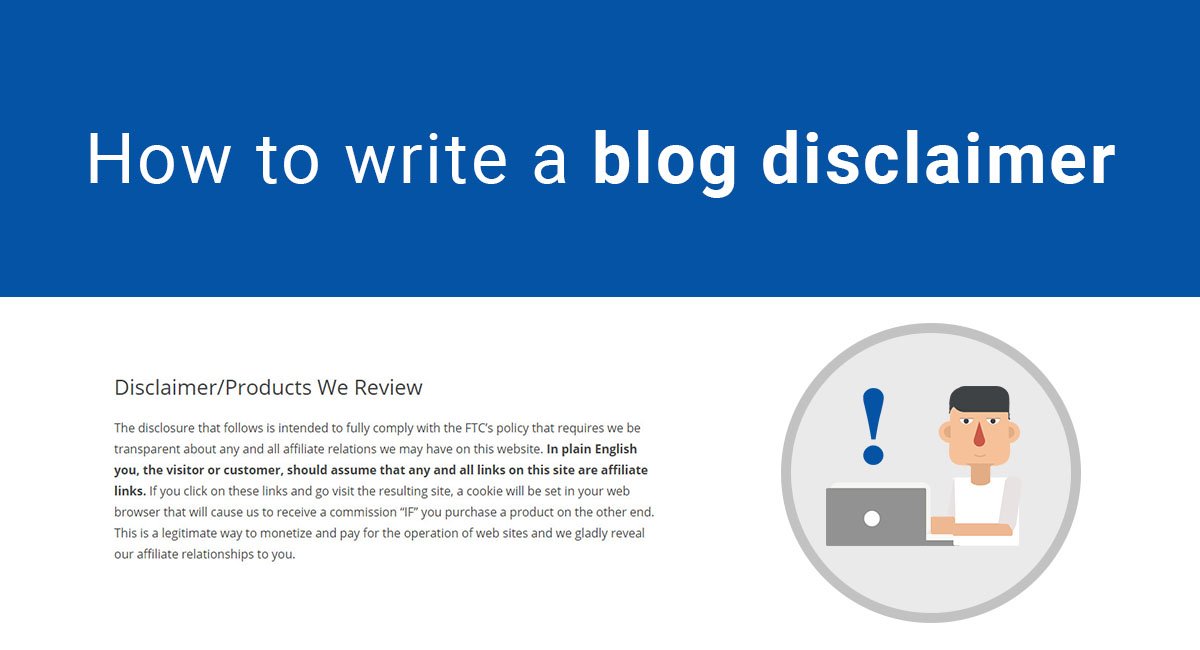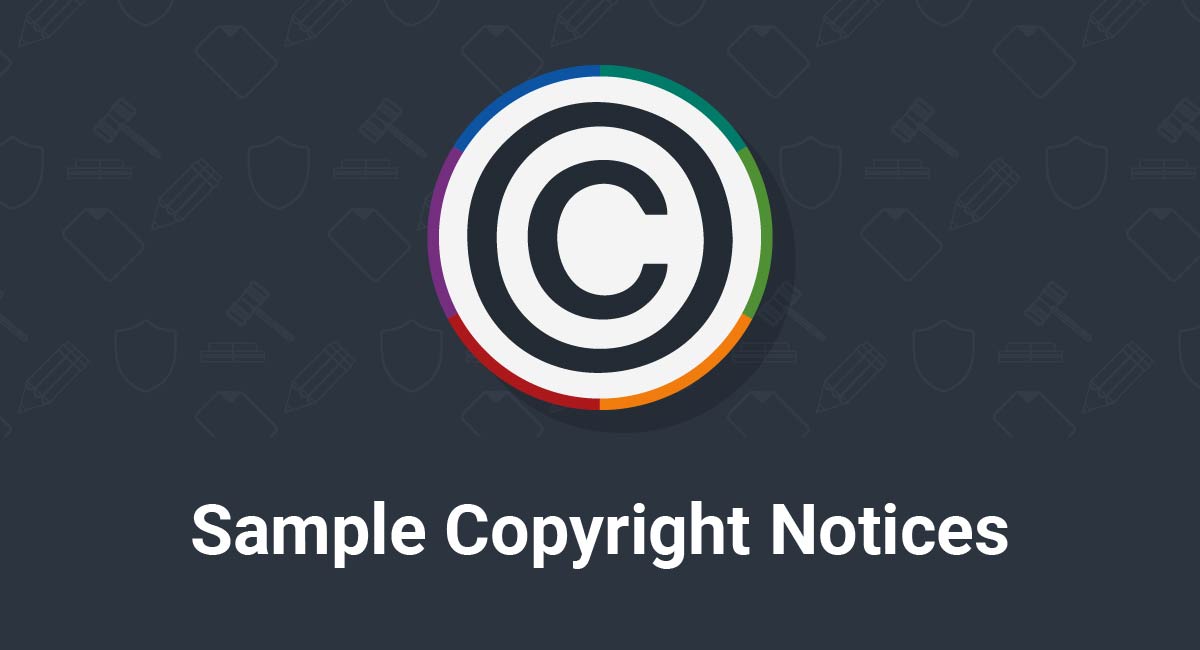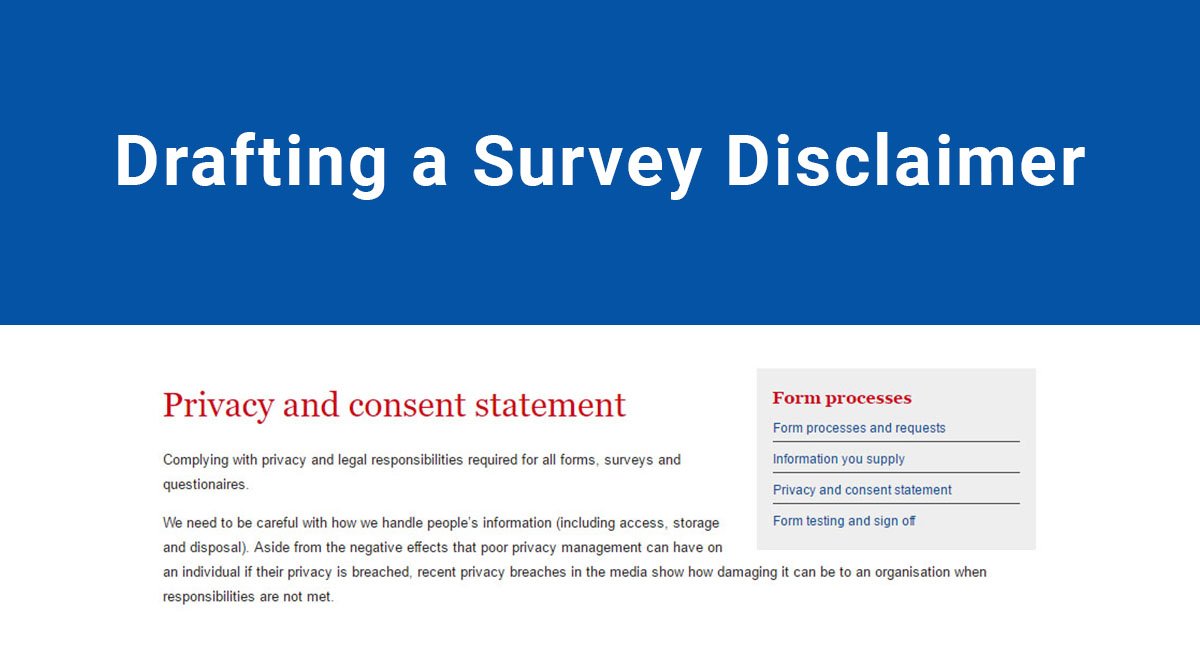While disclaimers are common on websites and blogs, they tend to be used less regularly with videos. However, not using disclaimers on videos can cause legal problems. This is because people take videos just as seriously or even more seriously than they take articles and blog posts.
Any exchange of information on the web should receive a disclaimer, whether in text or a video, and using them offers advantages.YouTube disclaimers also come with advantages.
Here is what you need to know about YouTube disclaimers and how to draft them.
Why have a disclaimer?
A disclaimer is a legal statement that defines rights, liabilities, and risks that may be assumed when a user accesses website content. They appear on blogs, websites, and sometimes, YouTube videos.
General functions
Operators of blogs and YouTube channels implement disclaimers for three primary reasons. These include:
- Providing information - A disclaimer may indicate that contacting the operator through the YouTube channel or comments is not a good way to reach them. They may also use the disclaimer as a way to explain the moderation of video comments and control of content on the YouTube channel.
- Controlling liability - If the operator is a professional, like a lawyer, doctor, researcher, or an accountant, they may add a disclaimer indicating that watching the video does not form a professional relationship or constitute receiving professional advice. Consulting with that professional is the best course of action rather than relying only on the video. For retailers and others who do not fall under the category of professional, the disclaimer may include a general waiver of warranties or liability.
- Legal compliance - Federal Trade Commission (FTC) requires truthful advertising and that includes disclosing any affiliate relationships. If the online product involves creating income, it must include an earnings disclaimer. These are U.S. consumer protection requirements that can result in fines if they are not followed.
For these reasons, disclaimers may show up everywhere information is shared, including videos.
Issues addressed
While the list of legal issues addressed by disclaimers is nearly endless, there are five that are most relevant to videos.
Depending on your field, the disclaimer will address one of these issues or a combination of them. Reading current YouTube disclaimers, the following appear the most frequently:
- Professional liability - It is easy for consumers to become confused and assume a video on medical research or local laws is professional advice. A disclaimer stating that YouTube videos do not create a professional relationships or obligations to the consumer helps deter possible professional liability.
- General liability - A video advertising a product may seem to offer warranties. This disclaimer makes it clear that there are no warranties or guarantees that a product will work as expected based on the video.
- Content control - Most operators allow users to comment on YouTube videos. While this type of disclaimer sounds more like Terms & Conditions, it acts as a way to control content in the comments and delete inappropriate ones.
- Fair use - YouTube videos may borrow from copyrighted material. While there is significant dispute on the effectiveness of these disclaimers, an operator may indicate that use of that material constitutes fair use and is not a violation of a protected copyright.
- Use at your risk - This is a disclosure that lets users know that anything that happens after following the advice in a video is the responsibility of the viewer and not the video creator. Investment advice or even portrayals of dangerous activities should contain a YouTube disclaimer that assigns responsibility to the user rather than the operator.
While YouTube disclaimers offer definite advantages, they are not widely used. If you would like to enjoy the protection offered by them, here is how to make them work best for you.
Using YouTube/video disclaimers
It can be difficult to find examples of YouTube disclaimers but the few that are available are very helpful. You want to focus on placement of the disclaimer then work on its content--especially if you need to draft one in order to comply with FTC regulations.
Placement
YouTube disclaimers are most likely found on an operator's webpage. It is a separate agreement with its own link. Lundbeck Worldwide and Bernard are two companies that take this approach.
Lundbeck Worldwide is a global pharmaceutical company that provides medical information. Here's its YouTube disclaimer:
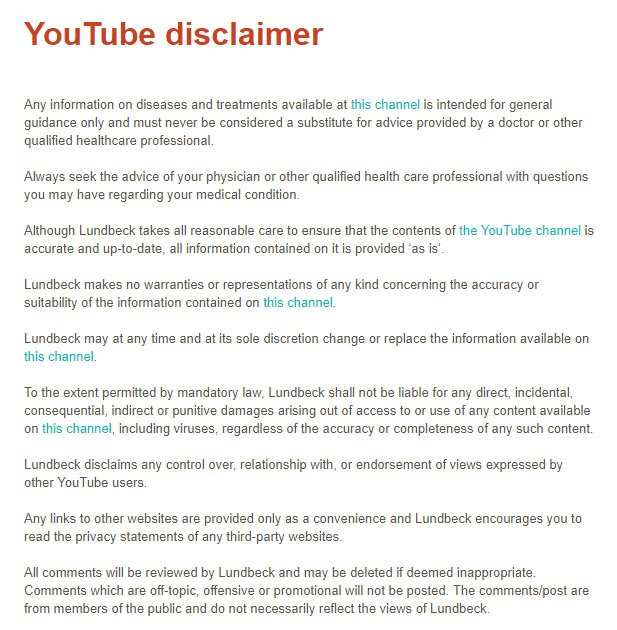
The disclaimer focuses primarily on professional liability and making it clear to users that its videos on medical research do not replace the opinions of their own doctors.
Bernard is a gun company that builds and sells guns. Here's a portion of the disclaimer from Bernard:
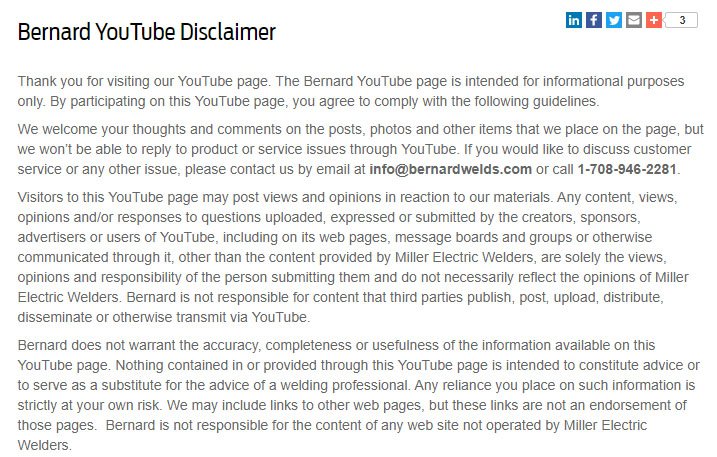
Bernard's Disclaimer also focuses on professional liability by indicating that any instructional videos do not replace the advice of a welding professional and that any reliance on website information is done strictly at your own risk.
However, while both companies took time with these disclaimers and made them available, there is no reference to them on their YouTube channels or videos.
You can handle this better through a couple of methods.
First, you can place a shorter version of your disclaimer in the video description. It may be as simple as a screen that has text that states something like "This video is for information purposes only and does not form a professional relationship. Call our office for a consultation if you wish to hire us for your next project."
If you already have a full YouTube disclaimer drafted and available on your web page, make it available on YouTube by providing a link to the disclaimer in your video description. Place it at the top before going into any other details. This makes it more likely a user will see it.
You can have the video narrator quickly read the disclaimer text or summary.
Content examples
YouTube disclaimers are customized to industry and the types of liability you are most likely to face. These examples reflect their industries and also give you an idea of what to include in your own YouTube disclaimer.
Professional liability
As mentioned earlier, you can see this in the Lundbeck and Bernard disclaimers where they inform users that the information they provide should not replace professional advice, and that all information is used at the user's own risk.
General liability waivers
YouTube disclaimers may also waive general liability. Similar to warranty and liability disclaimers in Terms & Conditions agreements, this is another way of communicating that the information in the video is not guaranteed.
Bernard highlights this portions in all-caps so users can notice it:

If you have instructional videos or endorse products, this provision is a good addition to your YouTube disclaimer.
Content control
Sometimes YouTube disclaimers read like Terms & Conditions in that they can contain rules regarding comments on videos. This prevents negative or distracting content.
Bernard discourages defamatory content as well as harassment and any uploads that can harm users' devices:
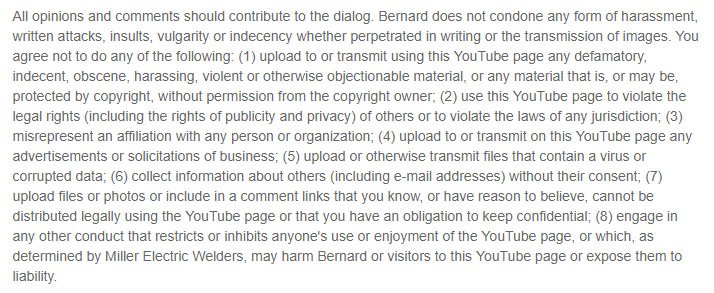
If it comes across such content, Bernard also reserves its right to delete the content and block users:

Even if the material you post is not controversial, this is still a good addition to your disclaimer. It helps you maintain a productive environment on your YouTube channel so you can preserve discussion without worrying about destructive content.
Fair use
The fair use doctrine in U.S. copyright law allows individuals to use copyrighted material to create original works. It includes criticism, news reporting, research, and derivative works. Many YouTube videos may use music or other snippets of other creations.
When that occurs, developers often wish to add a fair user disclaimer to their YouTube channel. The problem is, while it is reassuring, it does not have any actual legal effect. Fair use is protected without the disclaimer and if you violate someone's copyright, the disclaimer will not protect you.
This disclaimer merely indicates intent and encourages communication so you do not face a lawsuit. Vondran Legal recommends this general form if you wish to use this disclaimer. However, the firm is clear when indicating this may not actually protect you:
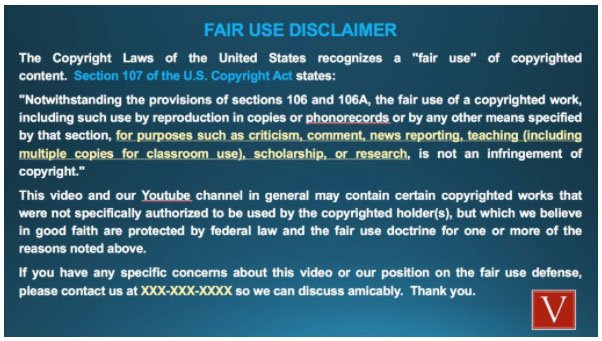
At best, this disclaimer indicates your intention not to infringe, which may be enough to discourage the copyright owner from taking legal action against you. Your best course of action is to avoid using copyrighted material when possible and if you do use it, keep it to a minimum.
Use at Your Own Risk
The "use at your own risk" language is widely used online. Videos showing skydiving, extreme mountain climbing or even making your own household cleaners out of chemicals could lead people to injure themselves. This disclaimer removes liability from the video producer if injury occurs.
This is mainly a warning that reenacting the actions in a YouTube video may be dangerous. It's a good idea to add them if your content seems to encourage people to take risks.
"Use at your own risk" or "Do not try this without training" are warnings and disclaimers you can consider for your videos. Use italics or All-Caps to add emphasis.
Miss Mary maintains an entertainment website describing folk cures and old medicines. It contains recipes of these old time elixirs that in many cases are not safe for human consumption.
She adds this disclaimer to her website:

If you have similar content - where entertainment can be confused with actual advice - it's a good idea to add the same type of language to your videos or in the "about" section on your YouTube channel.
You can benefit from YouTube disclaimers since videos share information just as much, if not more, than a website or blog article. Adding disclaimer language to your YouTube channel and video descriptions can help protect your business from legal liability.

Comprehensive compliance starts with a Privacy Policy.
Comply with the law with our agreements, policies, and consent banners. Everything is included.

